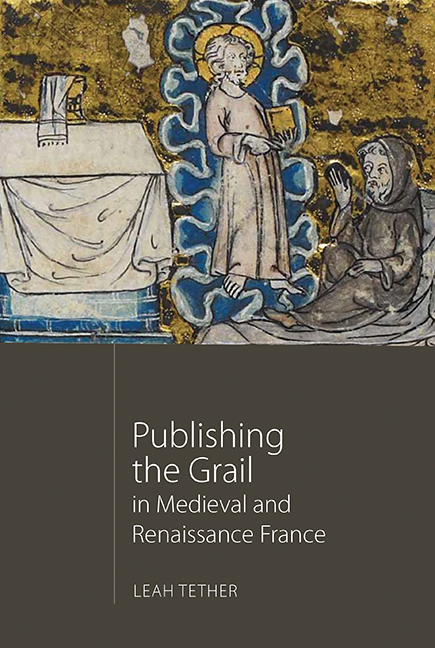Book contents
- Frontmatter
- Contents
- List of Illustrations
- Acknowledgements
- List of Abbreviations
- Miscellaneous Frontmatter
- Introduction: Grail Literature in France c. 1180–1530
- 1 Publishing in the Middle Ages and the Renaissance
- 2 Blurbing the Grail
- 3 Disclosing the Author
- 4 Re-packaging the Grail
- 5 Patronage and Promotion
- Conclusion
- Appendix: Timelines of Composition and Production
- Bibliography
- Index
- Arthurian Studies
Introduction: Grail Literature in France c. 1180–1530
Published online by Cambridge University Press: 16 May 2018
- Frontmatter
- Contents
- List of Illustrations
- Acknowledgements
- List of Abbreviations
- Miscellaneous Frontmatter
- Introduction: Grail Literature in France c. 1180–1530
- 1 Publishing in the Middle Ages and the Renaissance
- 2 Blurbing the Grail
- 3 Disclosing the Author
- 4 Re-packaging the Grail
- 5 Patronage and Promotion
- Conclusion
- Appendix: Timelines of Composition and Production
- Bibliography
- Index
- Arthurian Studies
Summary
When testators and correspondents describe their books […] they betray their perceptions of them, perceptions which might then inform our own: contemporary evidence of how books were regarded by their makers, owners and readers can only enhance modern understanding of these medieval artefacts and the culture in which they were produced and consumed.
In the literary world, there are few bedfellows better acquainted than the publishing trade and Arthurian literature. Ever since Geoffrey of Monmouth first brought the legend of King Arthur to a European audience in his twelfthcentury Historia regum Britanniae, book trade professionals have copied, rewritten and exploited Arthurian material with seemingly unceasing enthusiasm, with countless examples of Arthurian literature having been produced in manuscript, print and digital formats. Whilst Geoffrey, a Welshman, may have brought us the legend of Arthur, though, it was in fact the romance of Arthur, written by a Frenchman in the twelfth century, that gave rise to one of the most recognisable, and yet enigmatic, motifs in all literature. For his fifth and final romance, left incomplete after his death around 1180–90, Chrétien de Troyes composed Le Conte du Graal (The Story of the Grail). Its central motif, the Grail, might be easily recognisable to us today, but at the time it had never before been written about, and Chrétien's death prevented him from ever explaining the true nature of this enigmatic object.
It may be just as well that Chrétien did not complete the tale, though, since the lack of explanation regarding the nature and precise meaning of the Grail invited a swathe of successors to continue, reinterpret and rewrite the story, initially in France, but later also across Europe, with ever more diverse recastings of the material. Indeed, the attraction of the Grail was precisely in its inexplicability; it positively dared others to provide the answers. The resulting multiplicity of responses of Continuators and sequelisers in France in the thirteenth century laid the foundations for what, over the course of several centuries, was to become a genuinely international publishing phenomenon, one which continues today on a global scale, not only in print, but also in film, gaming and other new media.
- Type
- Chapter
- Information
- Publisher: Boydell & BrewerPrint publication year: 2017

